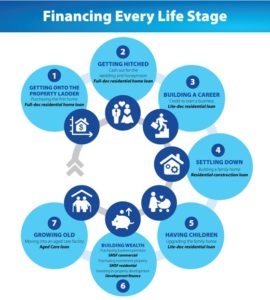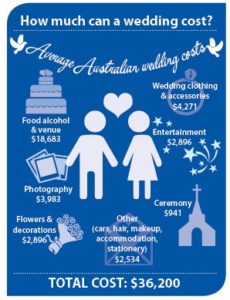A self-managed super fund case study the ATO has published highlights the importance of determining whether a person has officially retired for purposes of the Superannuation Industry (Supervision) Regulations 1994 (SIS regulations).
You may question whether it’s necessary to revisit something that has been in legislation for many years. The answer lies in the fact that the tax reforms will affect whether particular payments or pensions are measured against an individual’s $1.6 million pension transfer balance cap. This is particularly the case for transition-to-retirement income streams (TRIS) paid to anyone after reaching preservation age, as they may not realise retirement has or has not taken place.
The ATO’s case study involves Charlie, who is 57 and an employee, as well as a beneficiary of a discretionary trust, which carries on a smash-repair business. Charlie ceased employment with the trust and received his accumulated leave entitlements. As he was no longer considered employed, the trustees were satisfied that he never intended to be gainfully employed for more than 10 hours each week. After his retirement, he continues to perform substantial duties for the trust and receive distributions of trust income. The case study does not provide detail of what those duties are.
In its analysis of the situation, the ATO considers three issues:
- Whether Charlie meets the definition of retirement in SIS regulations 6.01(7) for someone under age 60
- The receipt of passive income from the discretionary trust
- The substantial duties being performed by Charlie in relation to a business operated by the family trust.
The ATO points out that any decision on whether retirement has taken place depends on the circumstances surrounding the case. In Charlie’s situation, the distributions from the family discretionary trust would not normally be taken into account as part of any decision because they are not ordinarily linked to gainful employment. However, the link Charlie has with the business carried on by the family discretionary trust influences the amount of the distribution he ultimately receives. Therefore, the ATO’s interpretation of gainful employment and retirement is broad enough to include activities that could be attributed directly or indirectly to the receipt of the relevant income.
In Charlie’s case, if no retirement is considered to have taken place, the fund may be in breach of the preservation rules and expose itself and Charlie to tax penalties.
Definitions are pivotal
The definitions of retirement and cessation of gainful employment are pivotal to whether a person has met a condition of release in Part 6 and Schedule 1 of the SIS regulations. Retirement is defined in SIS regulation 6.01(7) and gainfully employed is defined in SIS regulation 1.03(1).
The retirement definition is split into the period between preservation age and age 60, and after 60.
If a person has reached preservation age (currently 56) and is younger than 60, retirement occurs when the person has ceased gainful employment and the trustee is reasonably satisfied the person intends at that time never again to be gainfully employed on a full-time or part-time basis. The words full-time and part-time are defined in SIS regulation 1.03. In practical terms, at the time of retirement, the person must not intend to work any more than 10 hours each week. This does not prevent a person from returning to work on a more substantial basis; however, as the case study indicates, retirement should be the severing of the gainful employment link on a full and effective basis.
Once a person is 60 or older, retirement is where gainful employment has come to an end and they were at least 60 when that employment ceased. There is a second arm to the post-60 retirement definition in paragraph (b)(ii), which operates where gainful employment has come to an end, presumably prior to age 60, and the trustee is reasonably satisfied that the person intends never again to become gainfully employed, either on a full-time or a part-time basis. In most cases, a member will meet the requirement that they ceased at least one means of gainful employment after reaching age 60 and be considered retired. There is no requirement that all gainful employment cease, as it is sufficient to cease just one employment arrangement after reaching age 60 to meet the retirement definition.
Broad enough to cover most activities
SIS regulation 1.03 defines “gainfully employed” to mean “employed or self-employed for gain or reward in any business, trade, profession, vocation, calling, occupation or employment”. This definition is broad enough to cover those activities someone undertakes for which a payment is received. It includes anyone engaged as an employee, contractor, professional, religious calling, and so on. The amount of the payment, the level of effort involved and whether it results in a profit or loss is immaterial.
Gainful employment does not include activities for which an allowance or reimbursement is paid for an expense that is merely a coincidence to the activity. This would occur in the case of voluntary work where a person may be reimbursed, in part or in full, for the cost of meals, travel and other incidental expenses. It would also not include a person receiving a government allowance for looking after a disabled relative or a relative who undertakes child minding on an ad hoc basis. As an aside, prisoners who receive an allowance for making goods when serving their time are also not gainfully employed under the definition.
Now let’s look at the impact of the retirement definition on the superannuation reforms. These reforms impose a transfer balance cap of $1.6 million on amounts transferred to commence an income stream from July 1, 2017, and the value of income stream investments as at June 30, 2017. Where the $1.6 million cap is exceeded, a penalty tax applies to any excess. The value of a TRIS is excluded from being measured against the transfer balance cap, as the income on investments supporting the stream will be taxed at 15 per cent from July 1, 2017. However, once a person in receipt of a TRIS meets a condition of release, such as retirement or reaching age 65, it will auto-convert to an account-based pension that is counted against the $1.6 million transfer balance cap.
Anyone who has commenced or is planning to commence a TRIS and is nearing age 60 or over that age needs to be aware of the issues that could arise if they are nearing retirement or age 65. It is worthwhile to have the situation reviewed so they don’t fall into the trap of auto-converting to an account-based income stream. Once the stream has commenced, an alternative for anyone approaching retirement could be to fully or partially commute it to a lump sum and return it to accumulation phase in the fund to help avoid the penalty tax.
The lesson to be learned from not understanding what is meant by retirement for superannuation purposes and, in the broader context, conditions of release, may bring unexpected outcomes in the new world of superannuation reform post June 30, 2017. Anyone who has commenced or will commence a TRIS should be careful that they don’t end up having a super crash.
Source: Graeme Colley | Executive Manager, SMSF technical and private wealth at SuperConcepts







